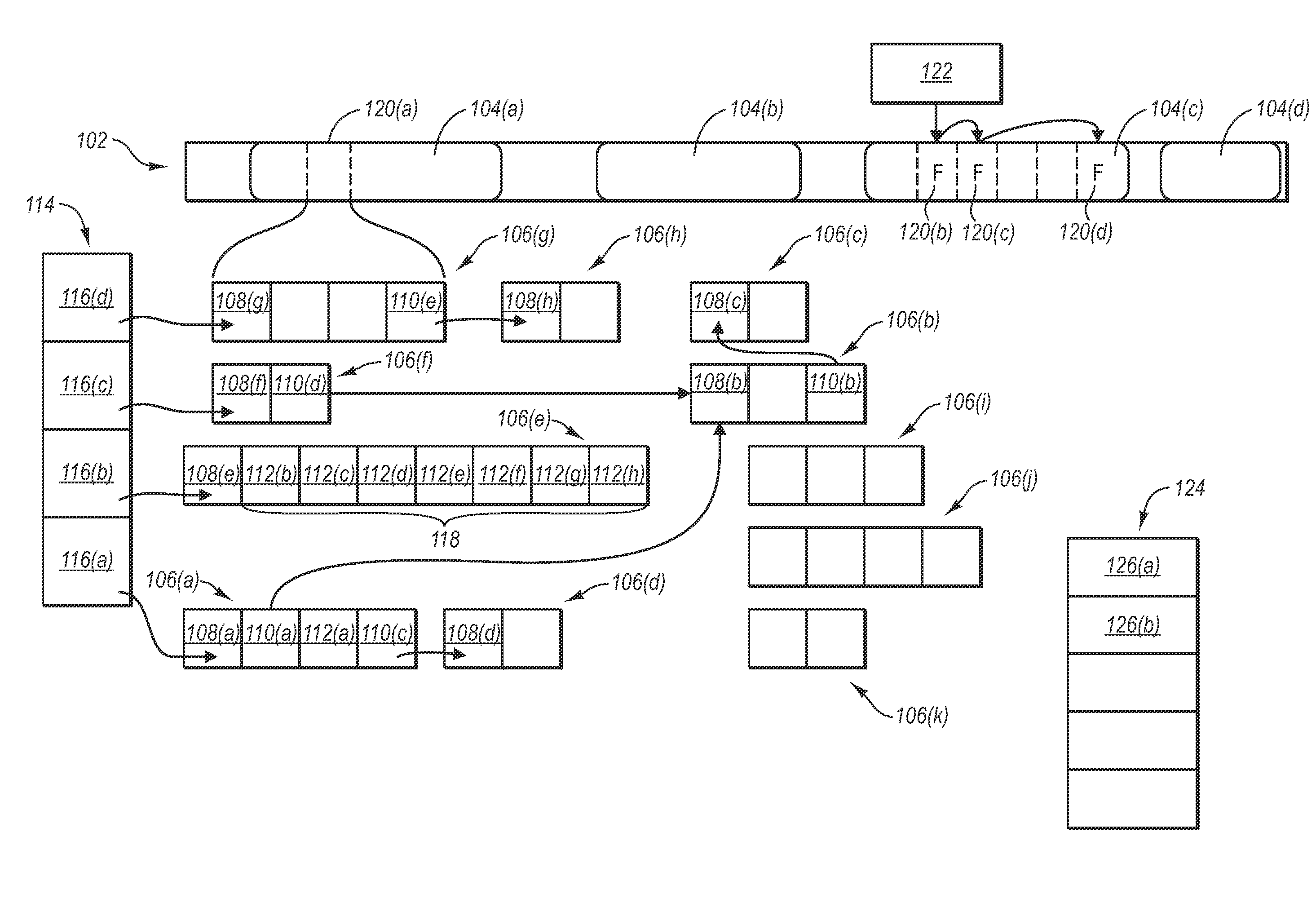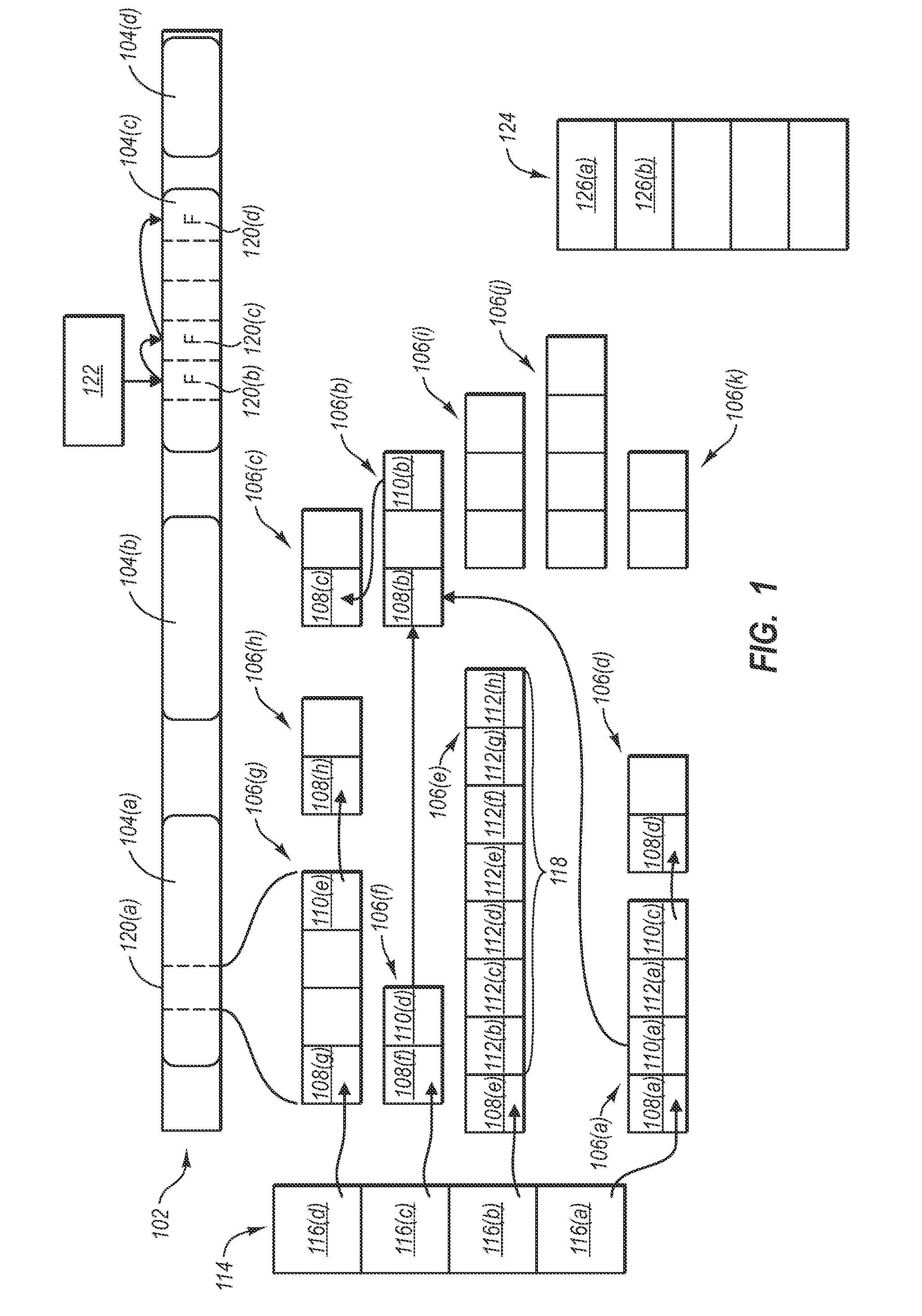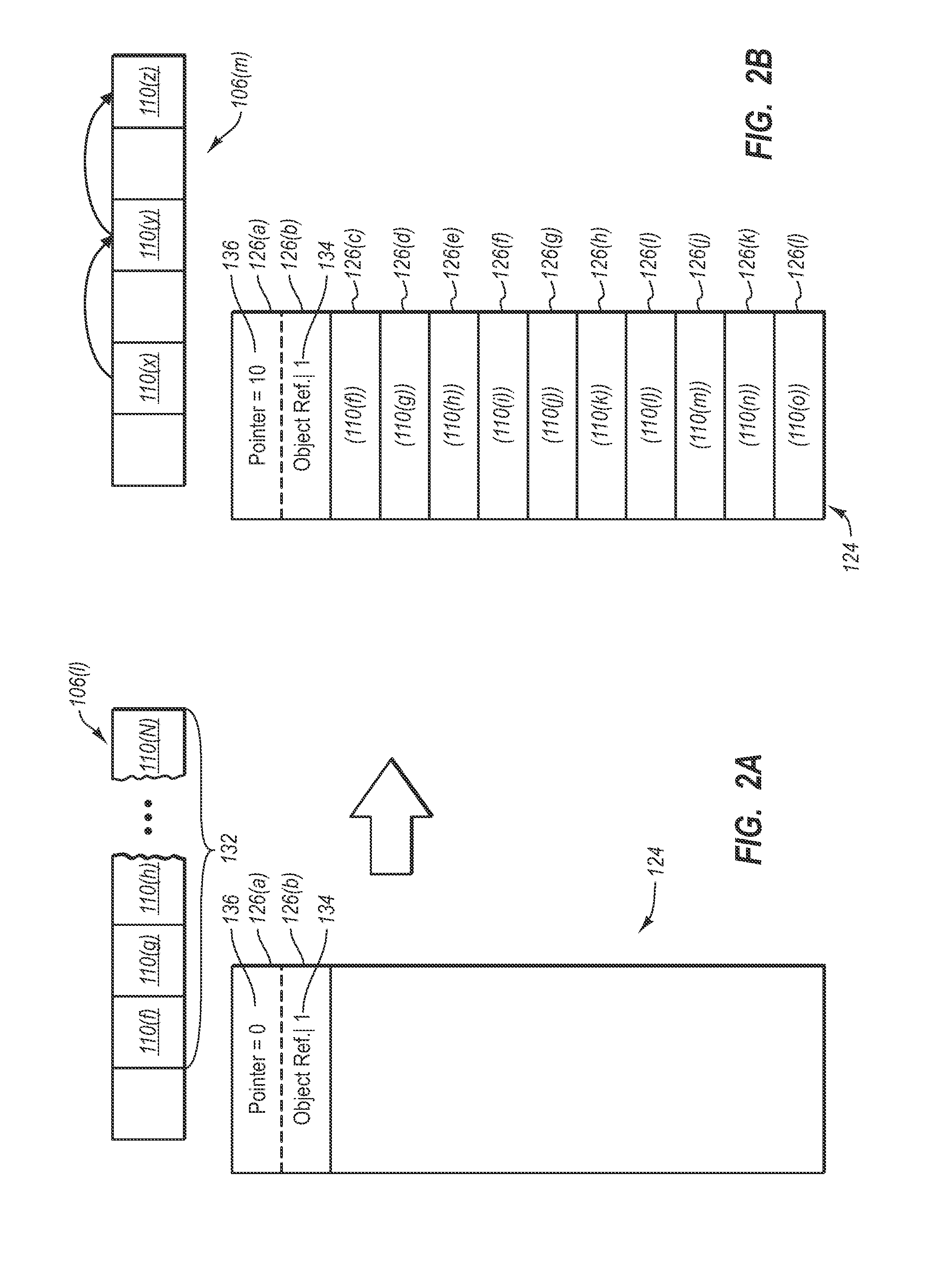Efficiently marking objects with large reference sets
- Summary
- Abstract
- Description
- Claims
- Application Information
AI Technical Summary
Benefits of technology
Problems solved by technology
Method used
Image
Examples
Embodiment Construction
[0014]As noted above, it can be very expensive to process overflowed objects that overflow a mark stack during a garbage collector mark phase when all objects that fall in an overflow range have to be examined. Thus, some embodiments described herein implement functionality for reducing the likelihood of an overflow condition. For Example, this may be accomplished by recognizing when processing an object will result in a large number of references being pushed onto the mark stack. Using a reference to the object itself on the mark stack and pointers used to identify references in the object, the number of references on the mark stack at a given time can be reduced.
[0015]Referring now to FIG. 1, examples of various garbage collection activities and allocation activities are illustrated. FIG. 1 illustrates a heap 102. The heap 102 comprises system memory, such as system RAM or other system memory that can be used to store objects. The heap 102 includes a number of segments 104. It sho...
PUM
 Login to View More
Login to View More Abstract
Description
Claims
Application Information
 Login to View More
Login to View More - R&D
- Intellectual Property
- Life Sciences
- Materials
- Tech Scout
- Unparalleled Data Quality
- Higher Quality Content
- 60% Fewer Hallucinations
Browse by: Latest US Patents, China's latest patents, Technical Efficacy Thesaurus, Application Domain, Technology Topic, Popular Technical Reports.
© 2025 PatSnap. All rights reserved.Legal|Privacy policy|Modern Slavery Act Transparency Statement|Sitemap|About US| Contact US: help@patsnap.com



